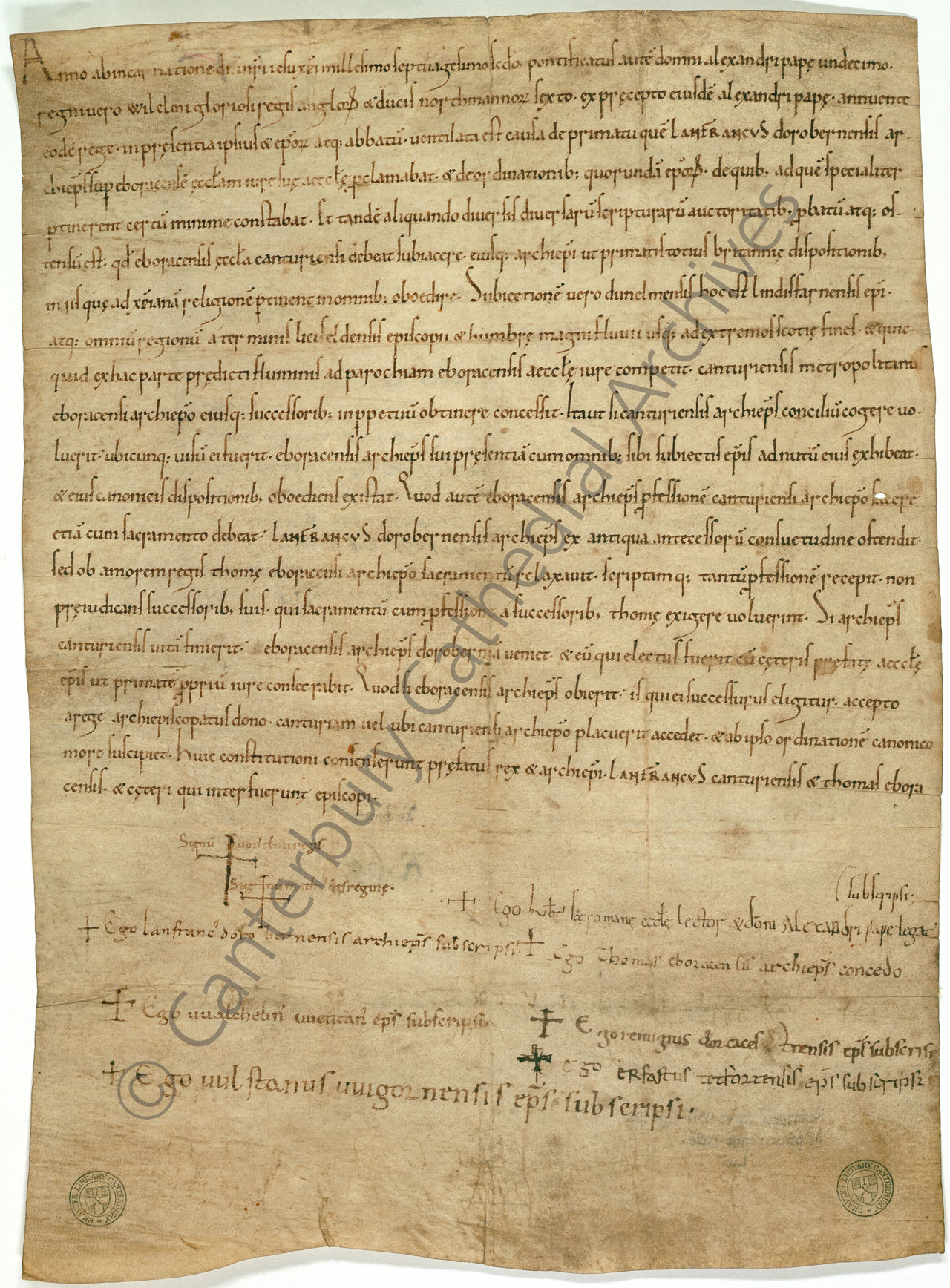Friday, August 31, 2012 5:40 PM

 During one visit to Canterbury Cathedral, I had the good fortune to tour the Cathedral Archives and see a number of fascinating and wonderful things. At one point, the Cathedral Archivist hands me a document, made of parchment and obviously quite old. The text is Latin and so, admitting my ignorance, I ask for a translation. She proceeds to explain, in unassuming British fashion, that the document I now hold in my hands clarifies the roles and responsibilities of the Archbishop of Canterbury and the Archbishop of York, and clearly establishes the superiority of the former over the latter. The agreement is known as the “Accord of Winchester,” it dates from 1072 and the prominent signature at the bottom of the parchment is that of William the Conqueror!
During one visit to Canterbury Cathedral, I had the good fortune to tour the Cathedral Archives and see a number of fascinating and wonderful things. At one point, the Cathedral Archivist hands me a document, made of parchment and obviously quite old. The text is Latin and so, admitting my ignorance, I ask for a translation. She proceeds to explain, in unassuming British fashion, that the document I now hold in my hands clarifies the roles and responsibilities of the Archbishop of Canterbury and the Archbishop of York, and clearly establishes the superiority of the former over the latter. The agreement is known as the “Accord of Winchester,” it dates from 1072 and the prominent signature at the bottom of the parchment is that of William the Conqueror!
“Oh, really?” I say, trying not to sound too-overly impressed. Even though at the same time, my mind is racing to catch up with the reality of the object clutched in my bare hands, trying to fully comprehend the significance of this seemingly simple, one-page document. Vague memories from church history class help me to remember that this is the agreement that ultimately led to the complete reform and reorganization of the English Church following William’s conquest, when Anglo-Saxon bishops were replaced with Norman bishops. What’s more, it became the tipping point that put into motion the effort to rebuild every existing Anglo-Saxon cathedral in England in the subsequent Norman fashion. Much of the architecture we enjoy today in the great medieval cathedrals of England was brought into existence because of this document. Truly, this unpretentious piece of parchment caused a seismic shift not only in English history, but its aftershocks went on to impact the Anglican tradition as it spread its way around the globe. It’s not every day I have the opportunity to touch such an ancient and extraordinary artifact of human history, and it was thrilling!
Ancient artifacts, such as the Accord of Winchester, have a transcendent quality about them. Not only did they influence civilization at the time they were created, but continually do so. Generations have highly regarded and carefully protected them, setting them apart as unique and special. Their significance and ability to transcend the ages infuses them with a sense of immutability, they exude a force of character beyond that of the simple mundane. They serve as reminders that we are part of a continuum much larger than ourselves. They help us to see beyond the limitations of our individuality and finitude to inspire comfort, confidence and optimism. They are a necessary elixir to those of us diminished by the fleeting, trivial nature of living in a “throw-away society,” expecting immediate gratification of our needs, and roiling in a constant state of change. Rarely, do we find ourselves in the presence of such objects of eternal value. But when we do, they shift the focus of attention away from our own selfish needs, raise our level of consciousness above the primal instincts of mere survival, and remind us of the priceless quality of life. Thanks be to God!